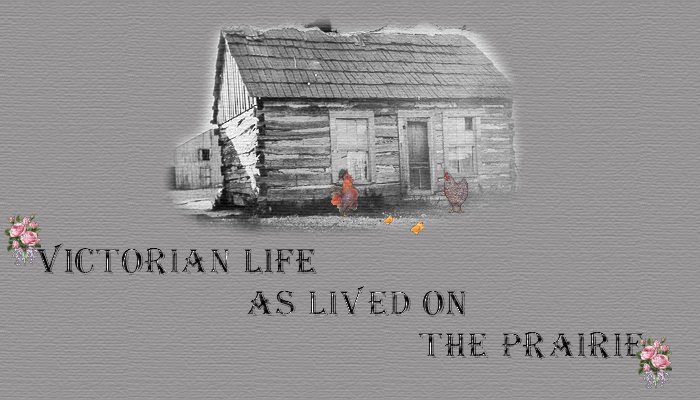

years, as a reminder to them of what it was like. This was their *second* home the first one being a dugout to get them
through the winter till they could build. For a wonderful letter written by Alonzo Monk who moved here as a young lad
with his family telling of their life please click here. You will most assuredly get a different picture of the *Victorian Era*
as he tells of his life for a span covering several years from the 1870's through early 1900s.

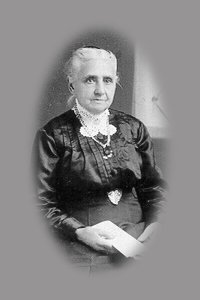

The lady who homesteaded
the cabin shown above...
and my great-great-
grandmother...a Victorian
Woman of the Prairie
study my own ancestry. Though I am an American History teacher, I can’t describe the “feeling” that developed in me as I traced the roots of MY
female ancestors as they bounced their way across the prairies to unknown frontiers, fought off the Indians, birthed their children in dugouts in the dead of winter, and carved out homes and communities in the American west.
They did this all without ever attending a ball or wearing pearls! Studying
their stories evoked the strangest of experiences, almost as if I became one
with them.
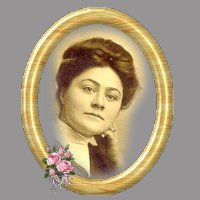
the milestones of my life and my ancestors before me, deciding which I could fit into the wagon and which must stay behind never to be seen again.
Of course I had to select the more practical items to take along the ‘must have’
items to care for my husband and child. Such a few of my beautiful treasures could be fit into the nooks and crannies of the wagon...such a few. My heart jumped a beat each time I thought of where we were going and all the
unknowns that lay ahead of us. And, when at last the day came to climb
aboard the wagon beside my husband I could not bear the pain of saying good-bye to my father, mother and sisters, knowing I might never see them
again in this lifetime...I could not look back as we rode away or I would never have stayed in that wagon seat. My heart broke.
Born 1889...a Victorian
Woman of the Prairie and
my Grandmother!

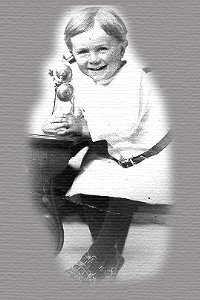
Yet, my husband found acres of land
at a price we could afford. Land that was to be GOOD for the farming he
so longed to do which was not possible in our beloved mountains. I watched
his sunburned face as we jutted along the well worn path where so many
wagons had traveled before us and I saw a jaw set with determination and
a spirit of excitement and adventure that flashed from his blue eyes.
I had never loved him more than at this moment as we shared this dream
and adventure of a better life.
On Sod Houses...how
they were built and
living conditions.

Time seemed to be endless. It was with delight that we would arrive at the sparsely distributed towns along the trail and talk to others who shared
similar dreams. And, oh, the stories they told...Indian attacks, folks starving
and returning home, babies buried in the wilderness, etc. Doubts arose...was this the right thing...but onward we drove, onward and onward toward our goal. Six months of drudgery, inclement weather, food shortages, filth and
sparse water, and then one day Charley said...”See that tree, Sweetie?
Well...that marks the beginning of OUR land.” Sweeter words were never spoken...our son jumped from the wagon and began to run wild with excitement.
was enough money to
secure a photo of a child
to send to the folks back
home! Photo of Wesley
Velvick, early 1900s.
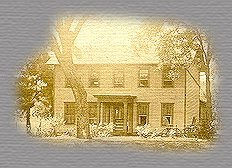
Thus, for our first home we simply dugout a sort of room in a hill, firmed it up the best we could and moved our things inside. In a season or two we’d build a home, but not now, crops first.
thought of the stories I had read of how some women of my generation counted it a “must” to have lily white hands and pale complexions...here
I was tan as rawhide, and as for my “lily white hands”...they were
calloused and rough but oh how proud I was of every callous as if it
were a merit badge for work done in carving out a place for my family.
No lacy parasol for me just my gingham sunbonnet.
work paid off and a new
home was built.
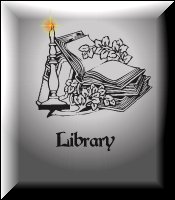
us. I knew the pain of loosing my first child to the prairie...she would not
be the last child we would bury on the hill under the sorrow tree.
for articles relating to Victorian
Pioneer Life, etc.

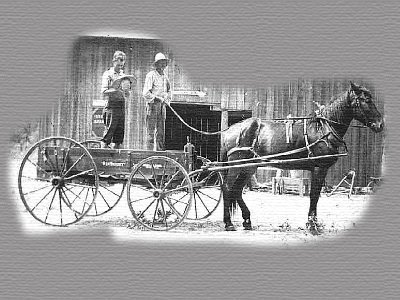
Edmund Velvick holding hat.
there was still time to fall in love...my
Grandparents...Thomas Earl Hart and
Grace Mae Heaston...engagement photo.

PAGE TWO